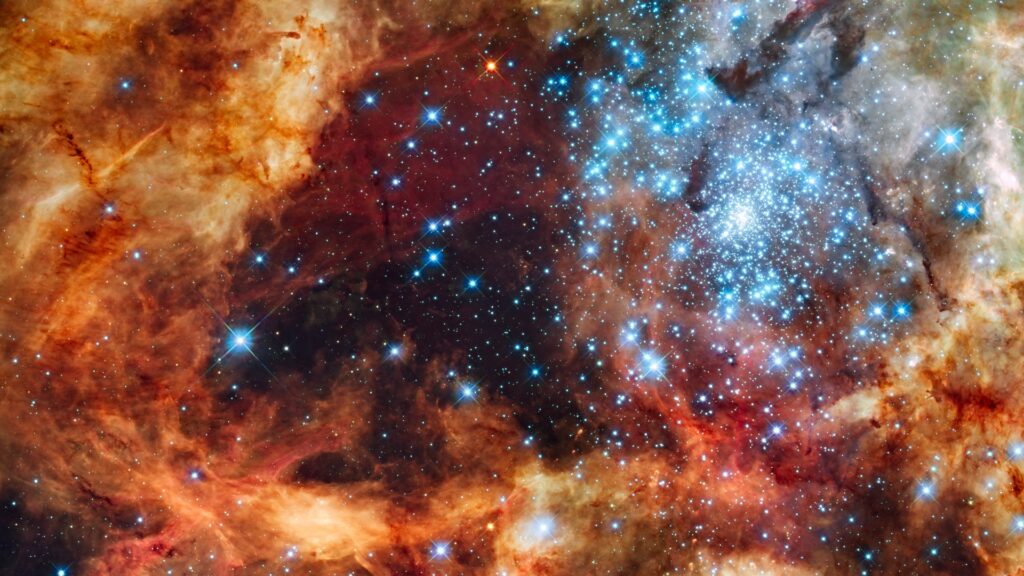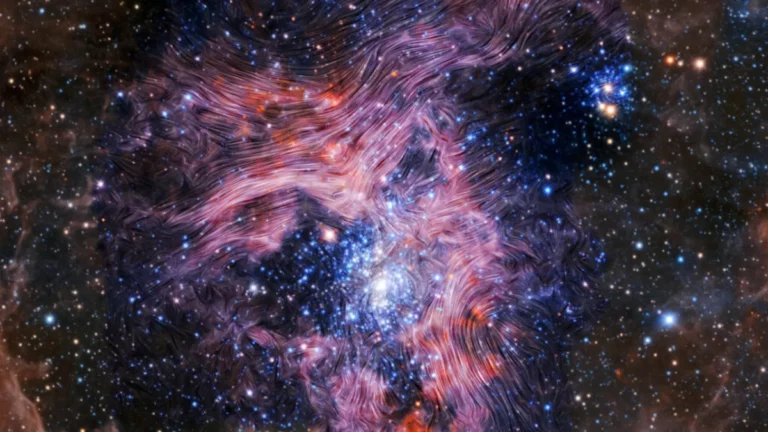Unraveling the Enigmatic Behavior of the Tarantula Nebula: Magnetic Fields at its Core
The region is home to some of the hottest and most massive stars that astronomers have discovered to date.
Within the heart of the Large Magellanic Cloud, a galaxy neighboring the Milky Way teeming with celestial nurseries, lies the Tarantula Nebula, officially known as 30 Doradus. This captivating expanse of star-forming gas exhibits peculiar characteristics that may find their origin in potent magnetic fields at its core.
Radiating an immense amount of energy, the Tarantula Nebula is fueled by the massive star cluster R136, situated near its center. However, the region extending 82 light-years from R136 deviates from expectations. Despite the intense stellar radiation, the gas pressure within this area is surprisingly lower, resulting in limited expansion and radiation compared to typical star-forming regions. Furthermore, the mass within this region appears insufficient to maintain stability.
These intriguing findings point towards the presence of complex magnetic fields as a potential explanation for the Tarantula Nebula’s peculiar behavior and sustained existence. These magnetic fields both confine and release gases in different regions, creating a phenomenon described by NASA as “a bit weird” in a recent statement.
Situated approximately 161,000 light-years from our solar system, the Tarantula Nebula stands as the largest and brightest stellar nursery among the galaxies within the Local Group, closest to the Milky Way.
The core of the Tarantula Nebula bears witness to a massive cavity formed by the intense radiation emitted by young, hot stars, distinguished by their vibrant blue glow. Within this region, astronomers have also discovered some of the hottest and most massive stars recorded to date.

In many parts of the nebula, researchers have identified strong magnetic fields that resist turbulence, preventing gravitational collapse of the gas. While this sustains the nebula’s structure, it hampers the birth of stars by hindering the collapse of dense gas regions.
Conversely, in areas where the magnetic fields are weaker, gas can escape and form expanding shells of material. As these shells accumulate mass, star formation occurs within them. The interplay between gravity and magnetic fields in the region was observed using the Stratospheric Observatory for Infrared Astronomy (SOFIA) and its High-resolution Airborne Wideband Camera Plus (HAWC+) instrument.
The Tarantula Nebula’s intriguing chemical composition, closely resembling more distant galaxies during the period of intense star formation known as “cosmic noon,” has captivated astronomers. Moreover, its remarkable rate of star birth surpasses that of the Milky Way, mimicking the stellar creation rates during cosmic noon, which occurred approximately 10 to 11 billion years ago, 3 to 4 billion years after the Big Bang.
Astronomers continue to study this captivating region of the Large Magellanic Cloud utilizing the Hubble Telescope and the upcoming James Webb Space Telescope. By exploring the Tarantula Nebula as a proxy for distant early galaxies, they aim to unravel the secrets of the infant universe.
The research is described in a paper published in the Astrophysical Journal.
Do not forget to share your opinion with us to provide you with the best posts !




0 Comments